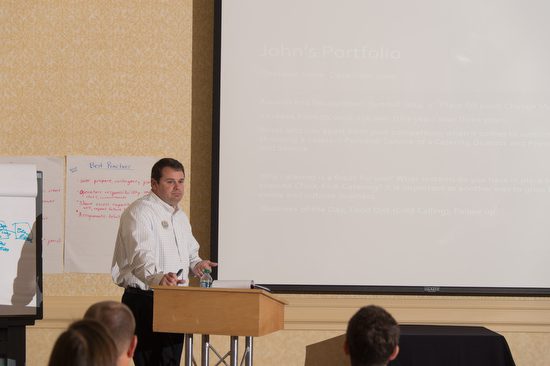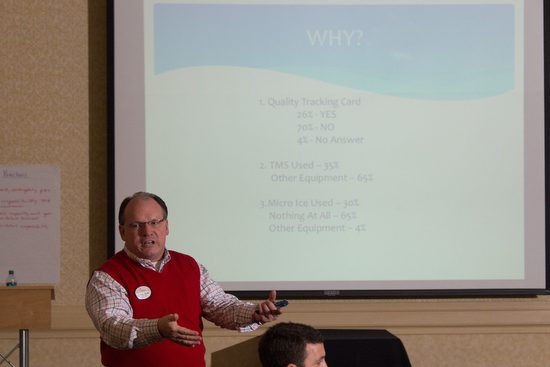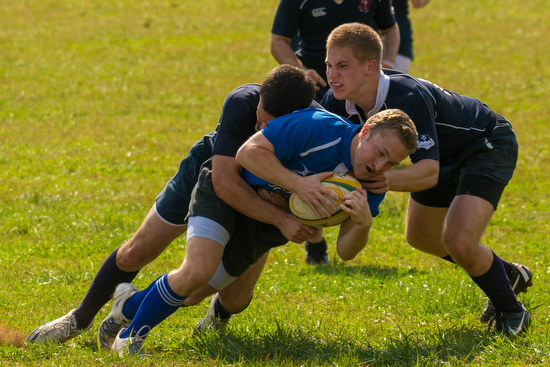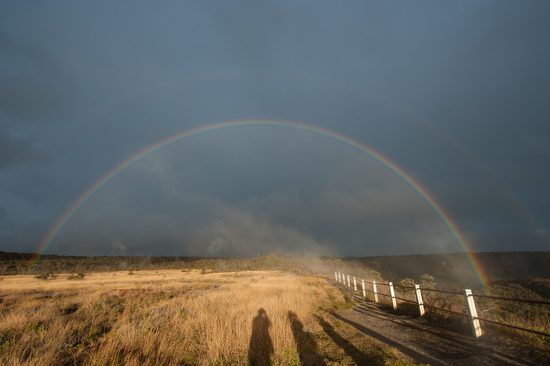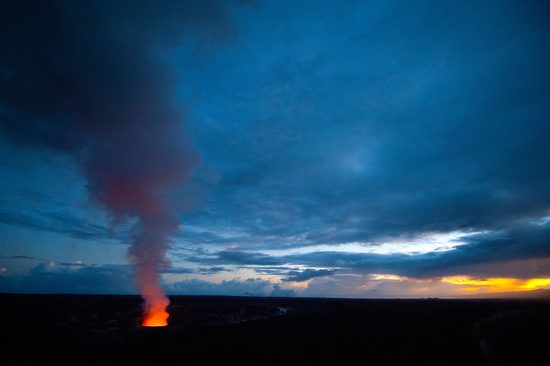 |
| Stanley teaching lighting to students in YWAM School of Photography in Kona, Hawaii. Photo by Dennis Fahringer |
The first 20 years of my career I worked on staff of a communication team. I started first working in newspapers where we had a daily deadline. I then went to work for a magazine where we covered similar stories that I worked on in newspapers but our deadline was monthly.
I then worked for a university where we had weekly newspaper and a few magazines that I shot stories. I was juggling many different deadlines those days.
Everyone I worked with on those publications was a professional communicator. While some were more word people and others more visual, together we were all trying to tell stories in ways that were compelling and drew our audience into the story.
Today, I work mainly with business people who are not professional communicators. There is a major difference in the conversations than with the professional communicators.
Defining the project
Working on a newspaper, I always knew what the story was about before I showed up to cover it. I knew when I was sent to cover a hard news story like a fire that I was to capture the who, what, where, when, why and how parts of the story. Also, it was running in the newspaper the following day.
I had to have one photo that could tell most of the story, because often that was the only space available. I was always shooting every assignment like a photo story, so if they had room they could use more photos to tell the story.
When I get a phone call or email requesting my services from a businessperson rarely is the project defined as it was when I worked in the media.
Questions for the client (sample)
• What do you need covered?
• What is the goal and purpose of the photos?
• Where will these photos be used?
• What is the feel/mood you are going for with the project?
• Where and when will this take place?
• What do you need from me as a deliverable?
• When is your deadline?
• What is your budget?
• Who is my contact?
• Who do I send the invoice to?
My goal is to get on the same page with the client. Often they are not sure of what they need and looking to me for some direction.
Educating the client
This is not when you tell the client what you do and what they need to give to you, this is more about asking questions which help you and the client move towards the goal.
I am helping the client understand everything we need from them to make photos that not only they will be pleased with, but most likely have a good chance to be in my portfolio.
It is not being a photographer or educator, it is being both that leads to success.
After I establish what they would like ideally, I now must help them know what I need from them to help accomplish this goal.
I would call all this information gathering part of the Pre-Production part of the project. Sometimes this can be done very quickly in a five-minute phone call or other times we need a few meetings with a team to make it work.
What I am trying to establish before the work begins is a storyboard. I want to have in my mind what the finished product should look like. Sometimes we actually create a storyboard of a few images. I always have the picture in mind of what we are shooting for, before I take on the project.
It is very easy to take a storyboard and then work backwards to establish everything we need to make it work. We work out who will be in the photos. We work out what they should be wearing. We also establish what props and location we will use. We decide on the best time to do the photography.
We also know all the places we plan to use the photos, so we can be sure the files that are created digitally will work for each of those mediums, whether it is for web, print, billboards or video for example. Each of these will help us determine things like to shoot vertically or horizontal. Sometimes we need both and so we are prepared to shoot it both ways.
At the end of the Pre-Production process the photographer and client know all their roles. Who is responsible for being sure everything is in place.
Seeing is believing
I am always shocked at how many visual people fail to show their clients examples of what they are talking about. Go to your meeting with a few examples ready.
Send the clients examples after a meeting if a new idea or direction is taken that you were not prepared to have examples for at the time.
You need to build a small database of examples that could be on your laptop or iPad ready to show. The key is to have some sort of a way to put your finger on them quickly.
I have a document with links to all my videos and multimedia for example. I also have a database which I can pull up a thumbnail of everything I have shot. I can search this pretty quickly to have examples in a meeting.
Conflict resolution
The first few jobs you do most likely you will forget to ask a question. This is where you will have to decide if you messed up. If you did then you may have to eat some costs to make it right with the client.
The best way to avoid these conflicts is to work with a mentor who can help revue your estimates. The best place to find someone like this is through a professional organization. I have bounced many of my estimates off of other American Society of Media Photographers (www.asmp.org) through the years.
You will get a client sooner or later that will push you to your limits. Some of these clients feel they have done their job when they have maximized the relationship with you on the project.
When they start making changes you can easily stop and listen to their request. Learn to say, “I am more than happy to make these changes for you. In order to meet your request I must _________________. Let me make the changes here to the estimate and have you sign off on this and lets make it happen.”
Sometimes I have to say that in order to just pop in and make a picture means that I may not have time to do the rest of the photos on our schedule. Sometimes I am saying this is additional work and I need to charge for that service.
The key to resolving the conflict is to articulate the situation and ask them what they would like to do going forward. You are letting them know how you are willing to resolve the issue and then they get to choose. Often the choice is a yes or no to making the changes.
Questionnaire
I recommend you creating a questionnaire that you have by the phone or something you could email to the client even to fill out. This is very important to ask all the right questions or you may have to be eating some costs later.
Today I have done this so many times that I am not even aware I am going through my list of questions. The conversation with the client feels like a conversation more than me filling out a form.
I am taking notes that I will refer to throughout our conversation and use later to help create my estimate.
Are you ready for the phone to ring?



















































